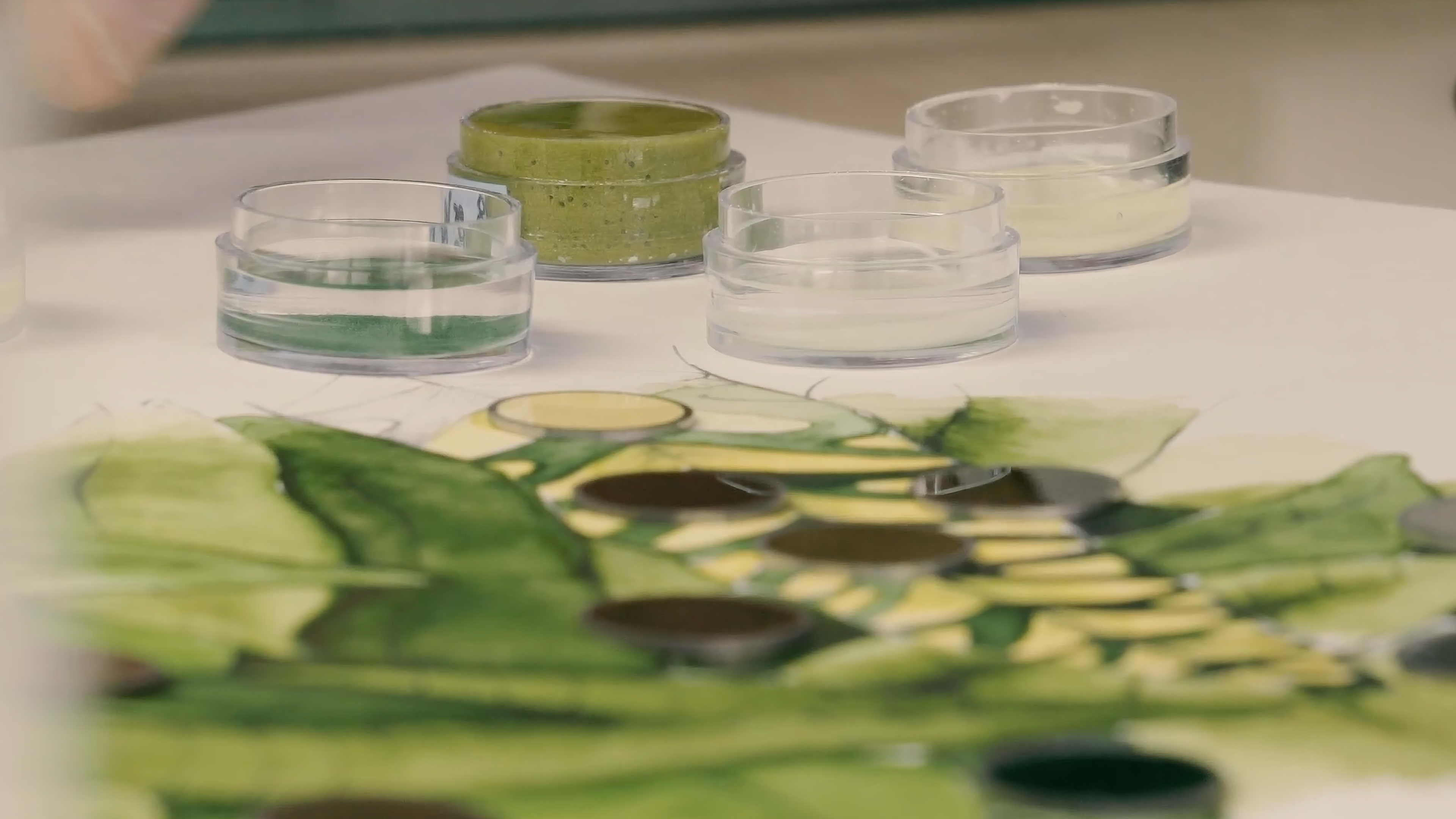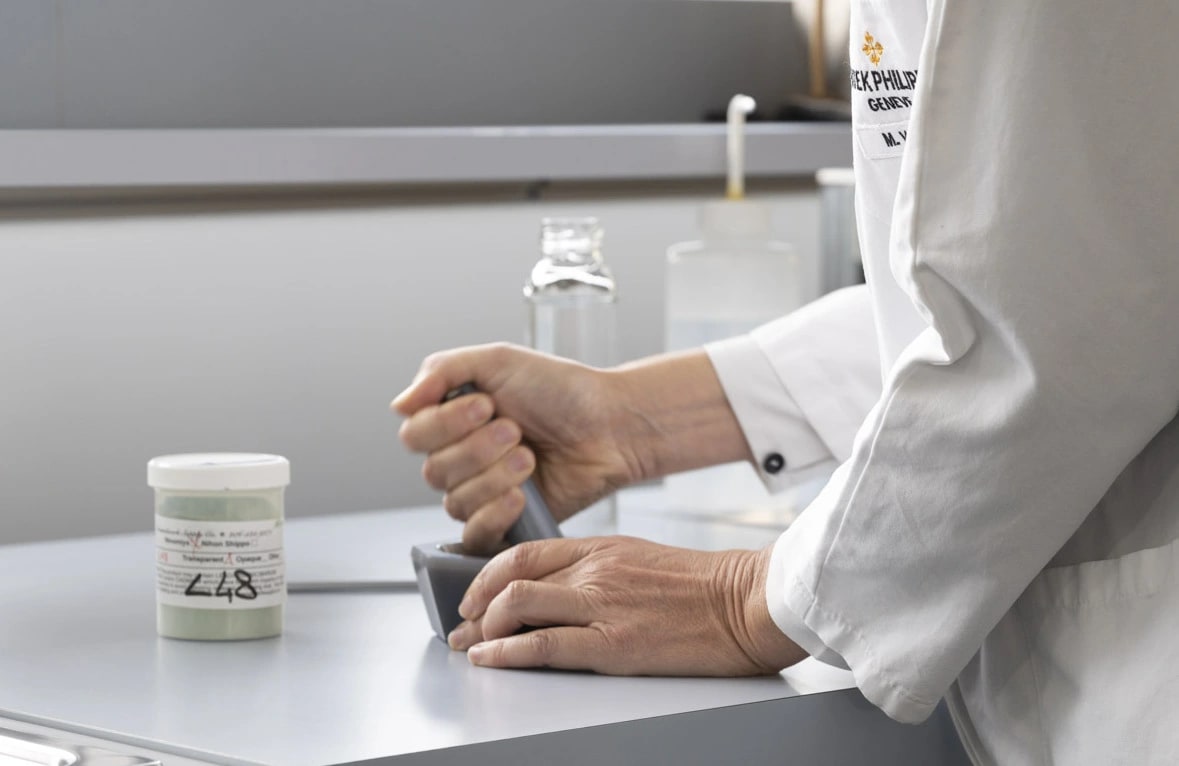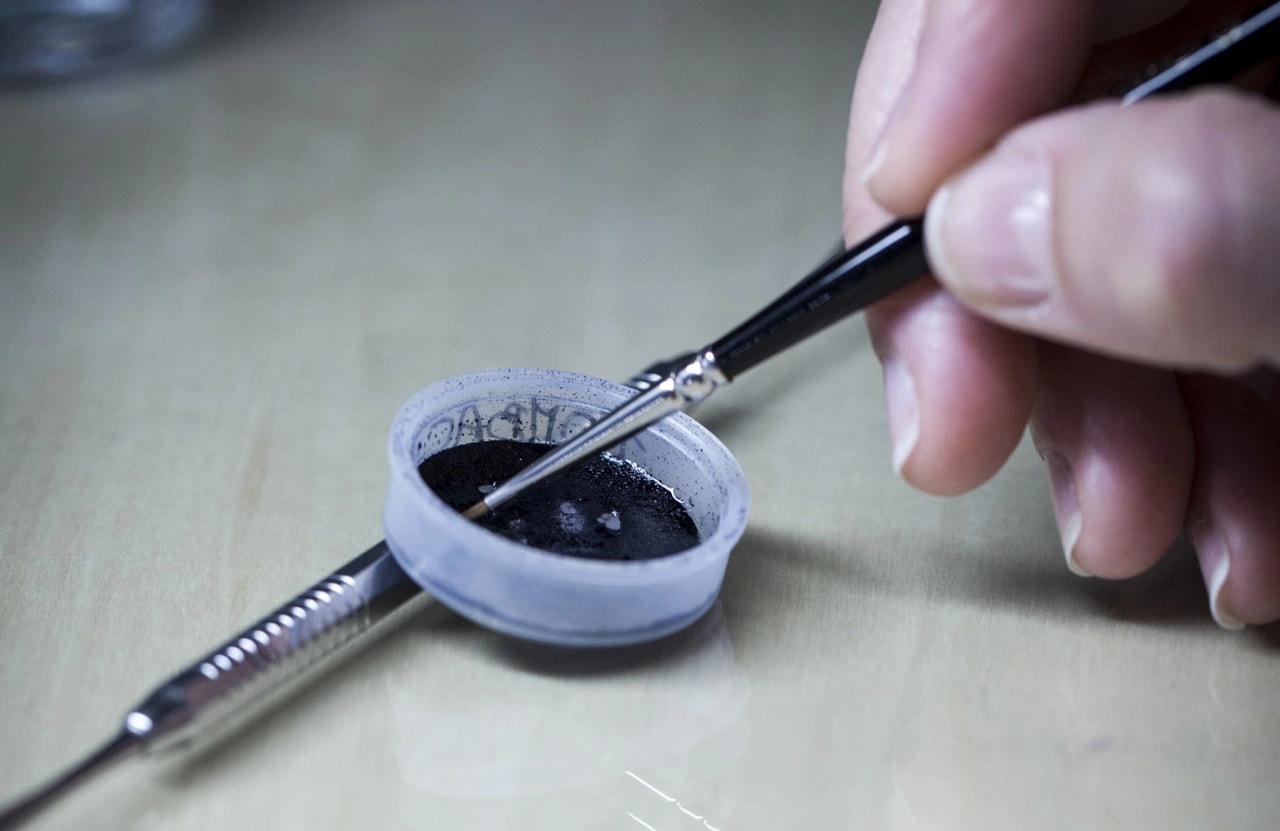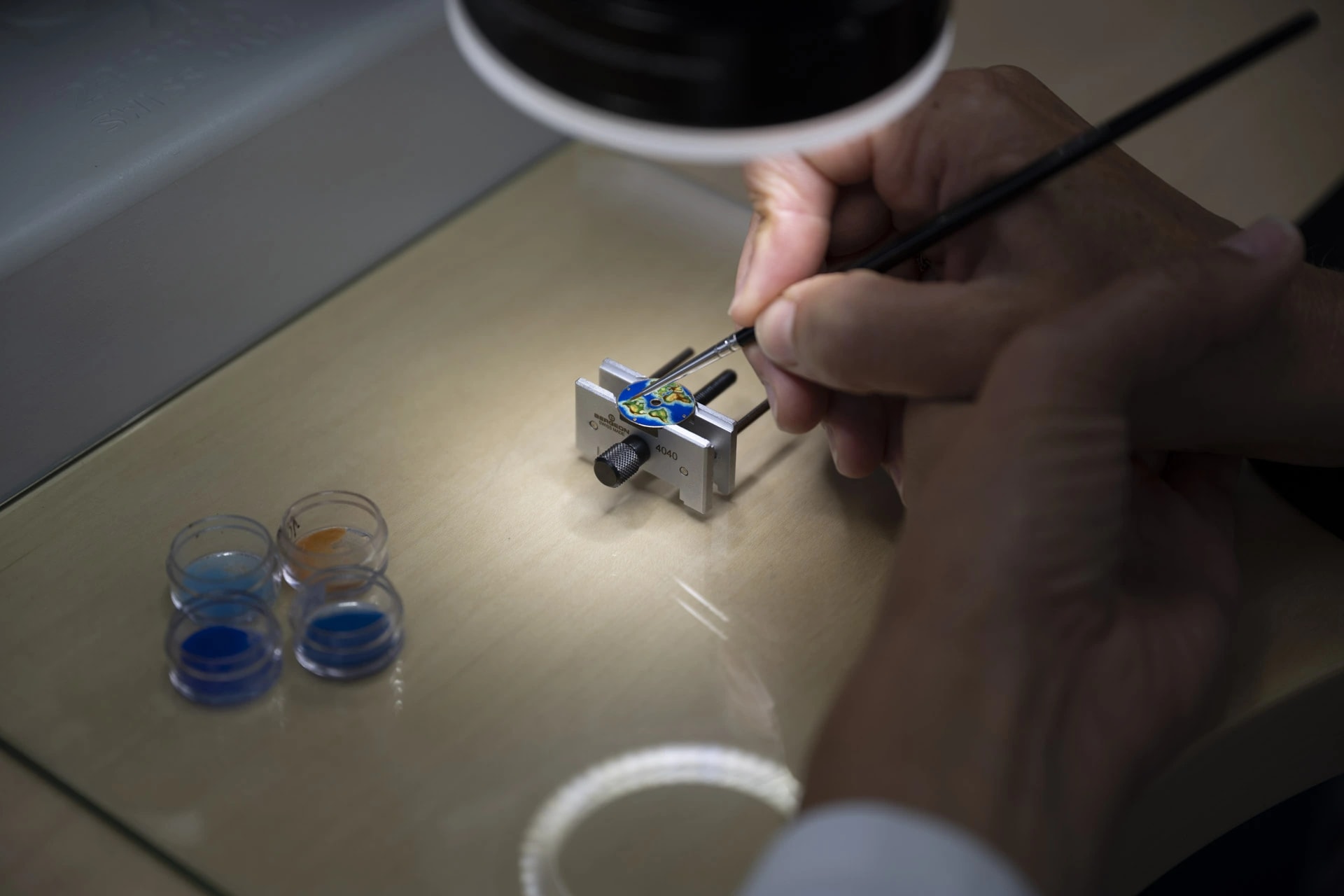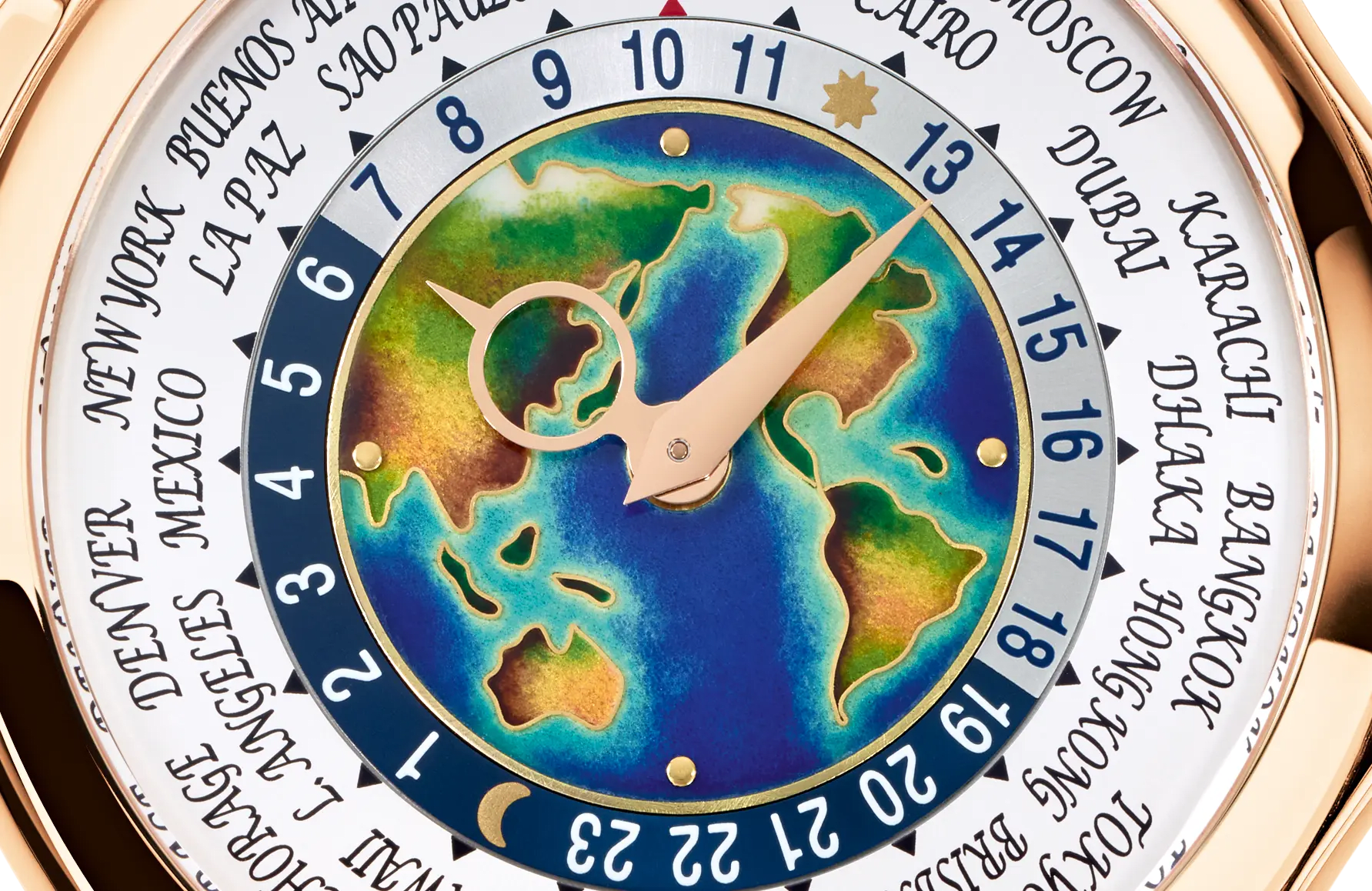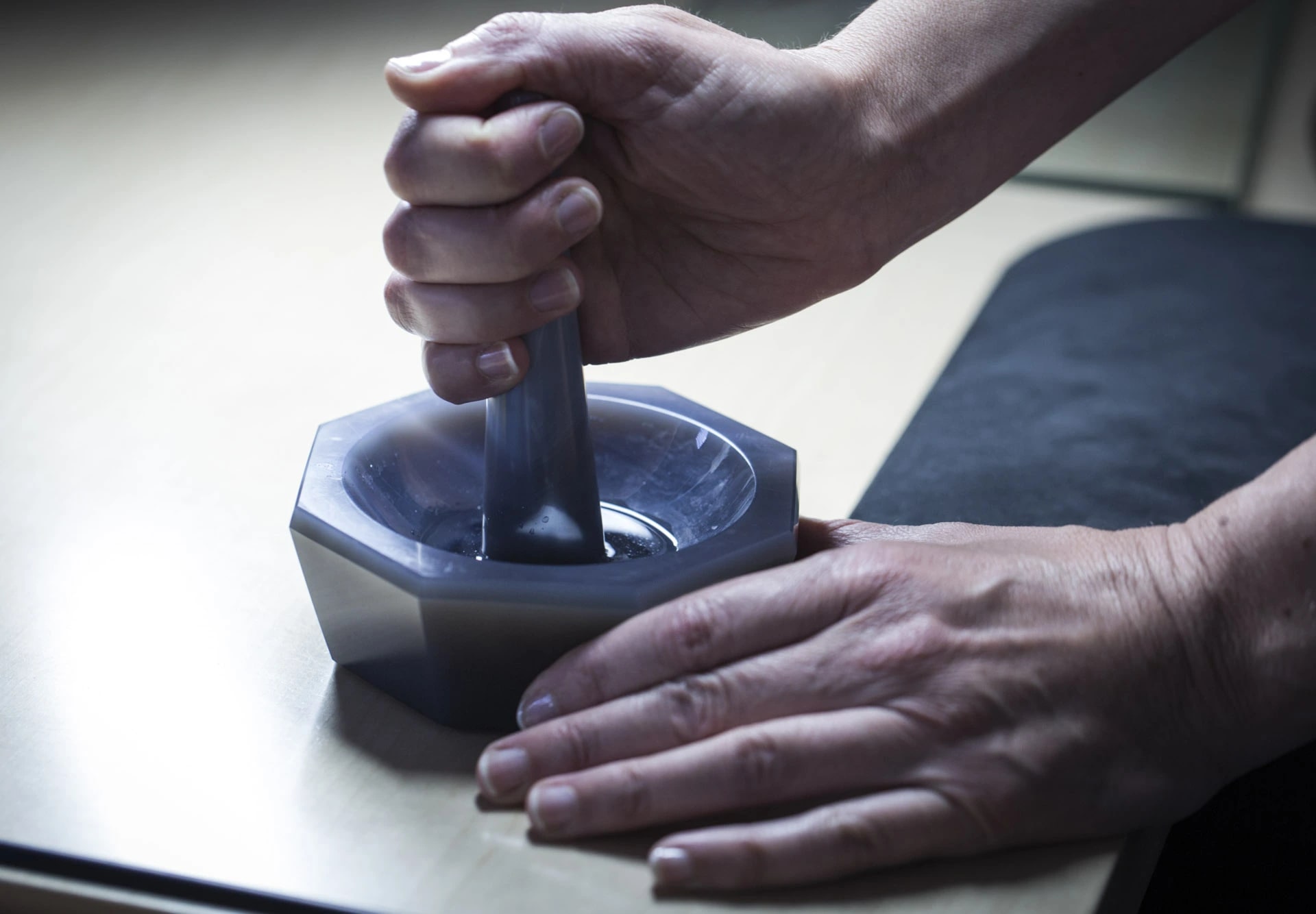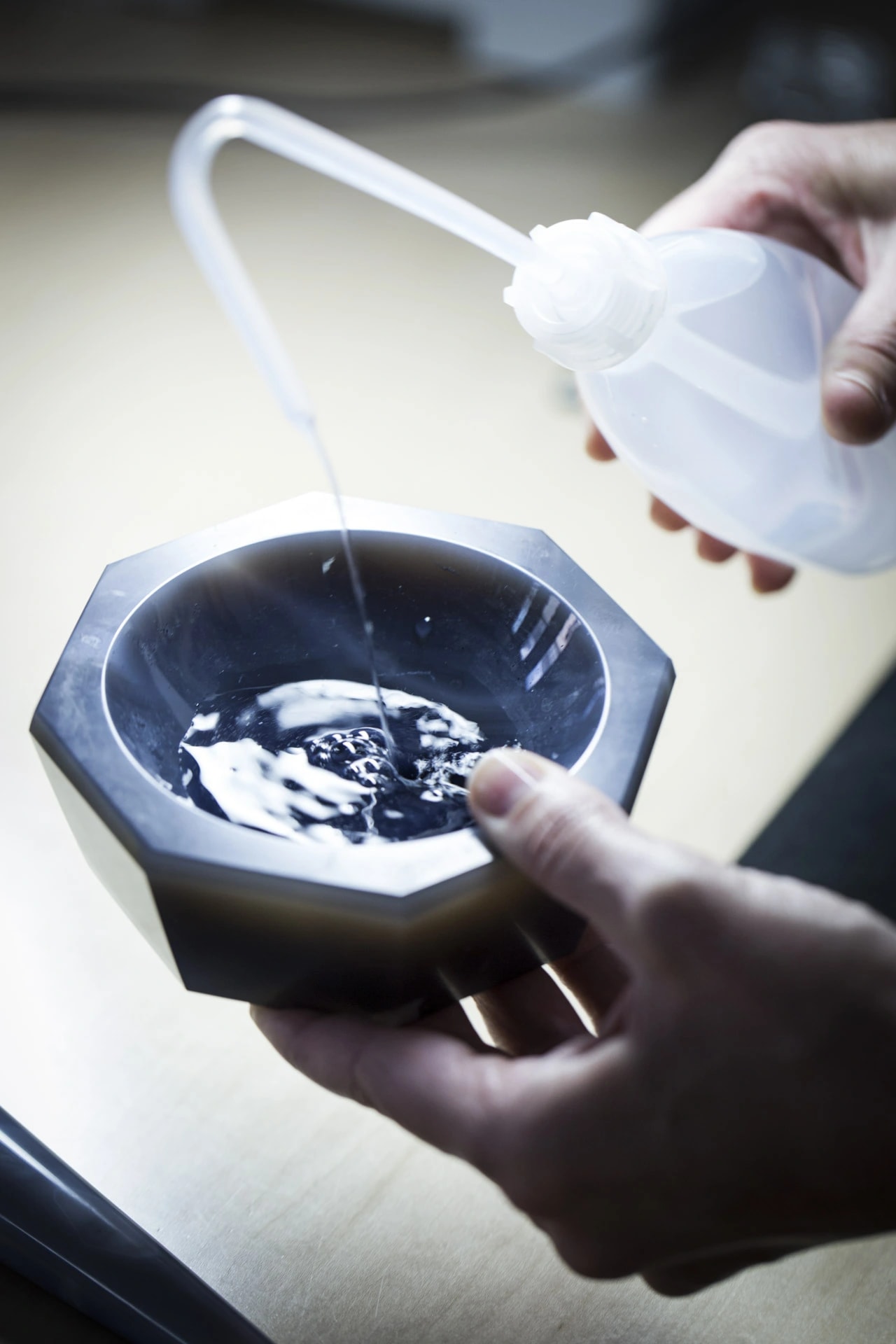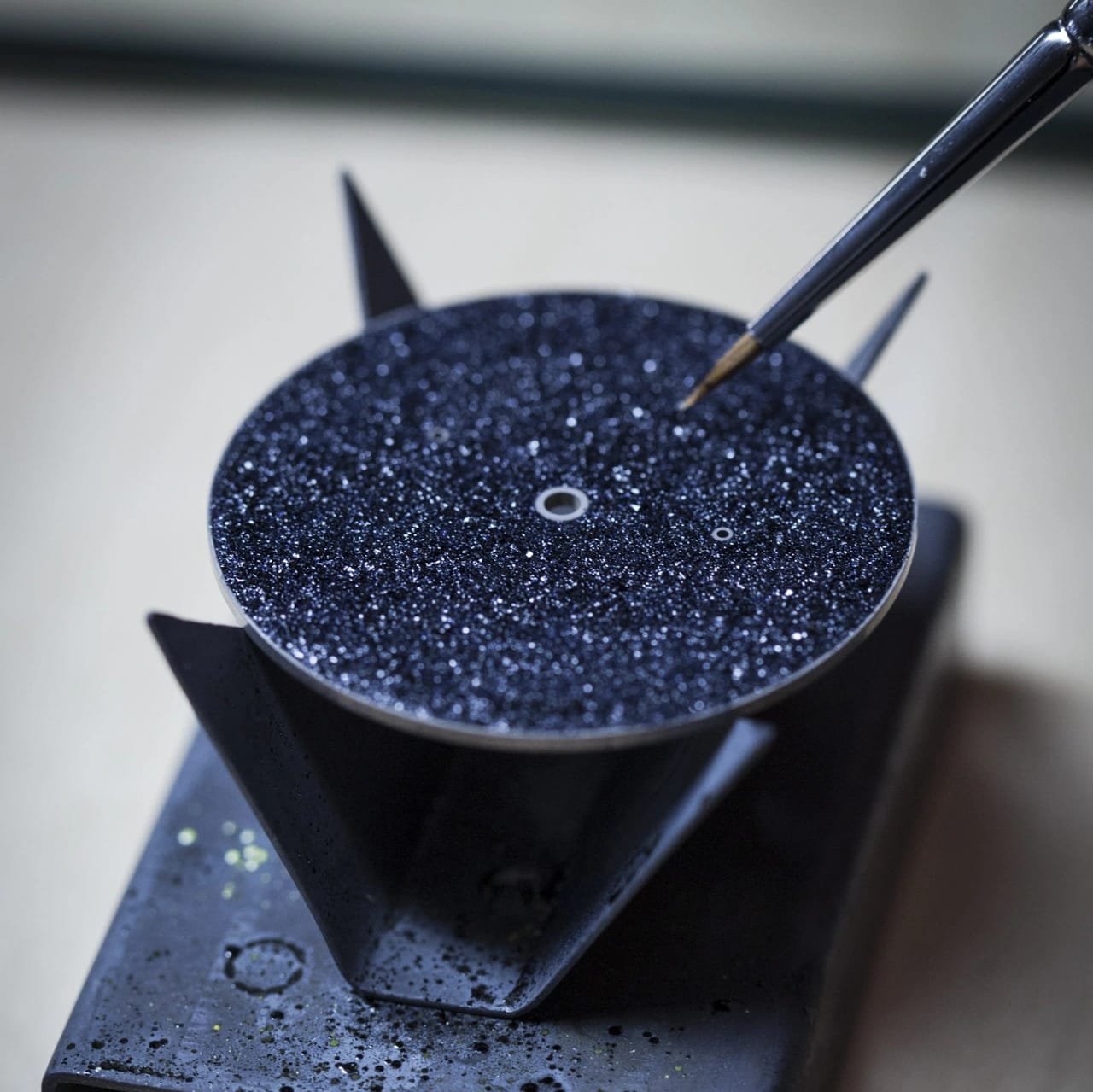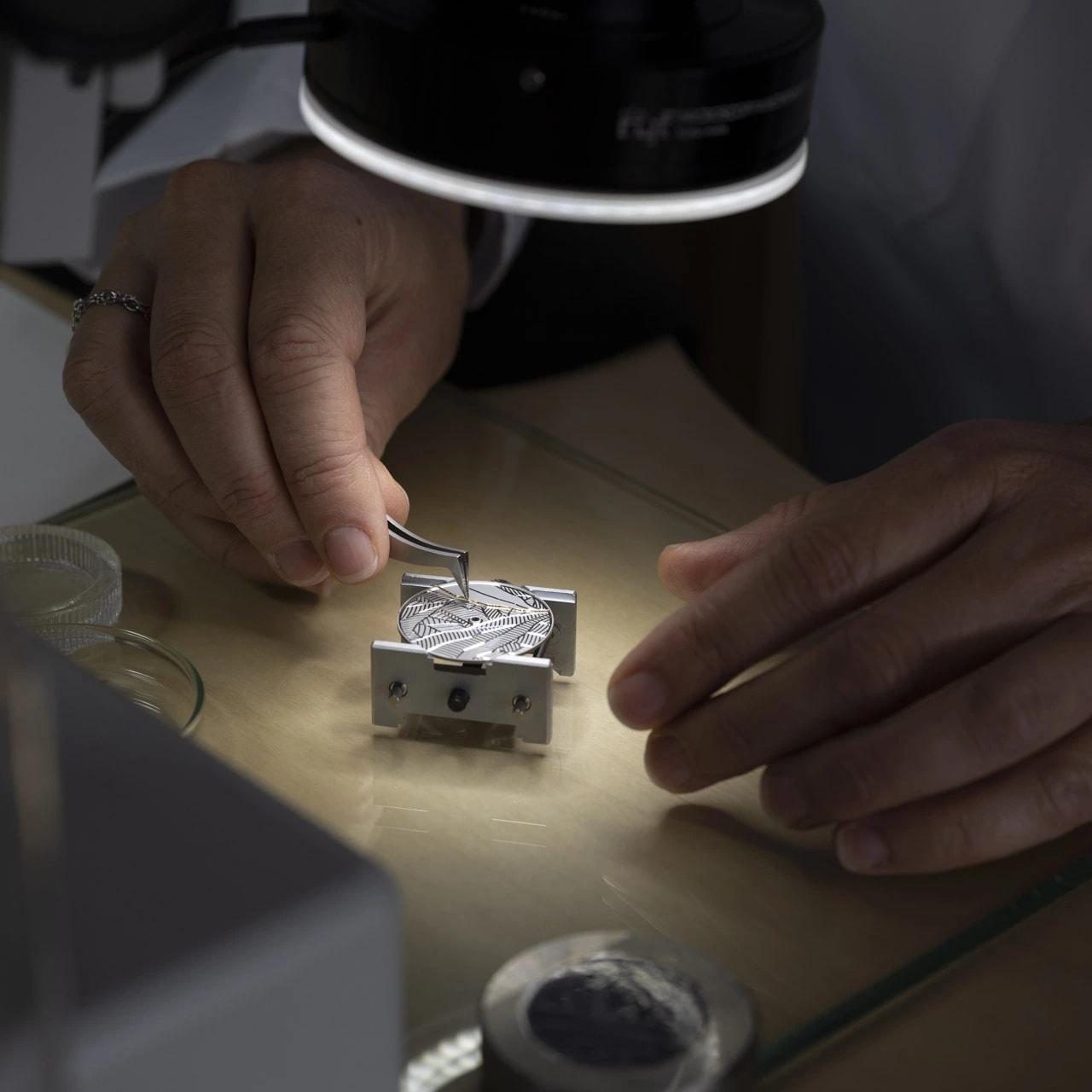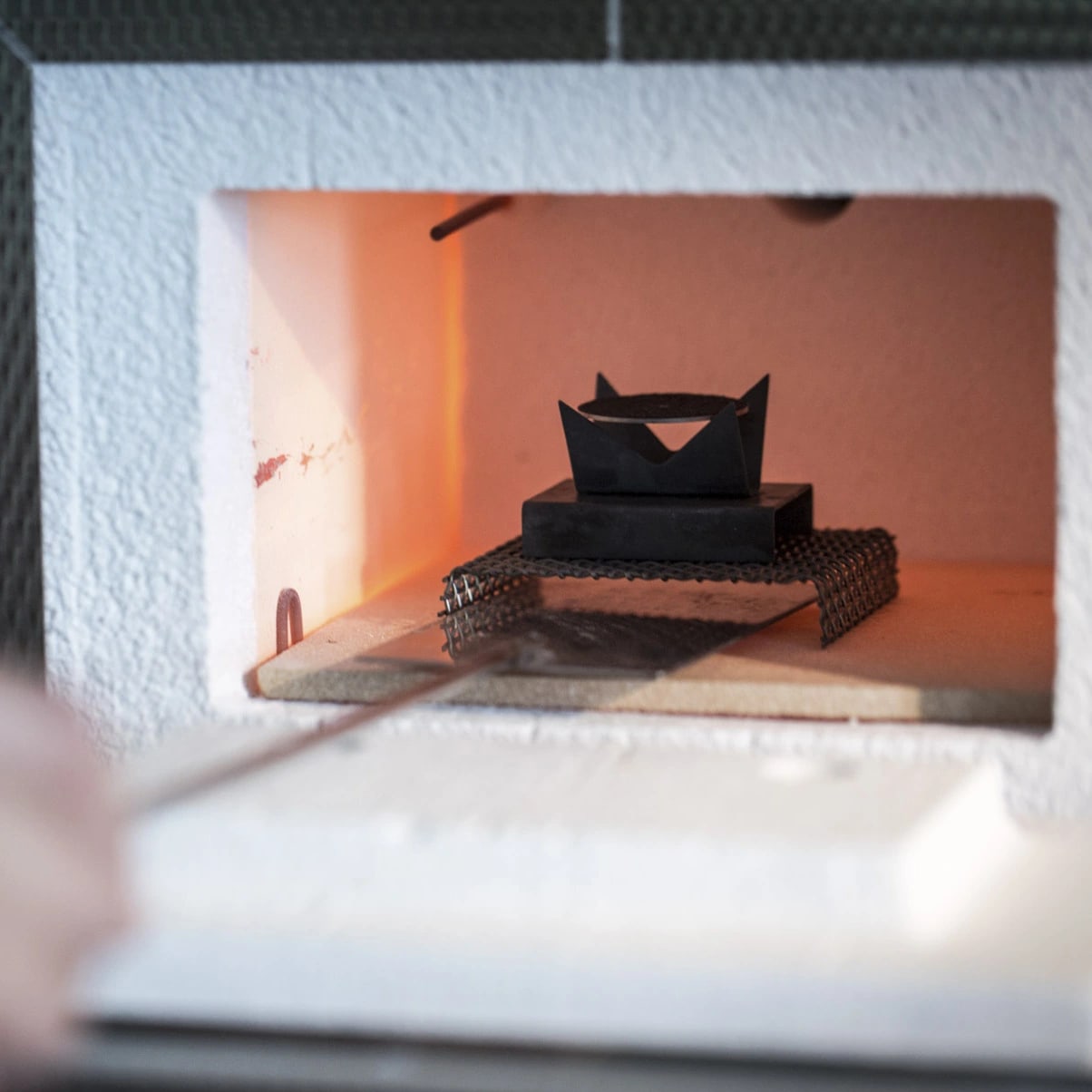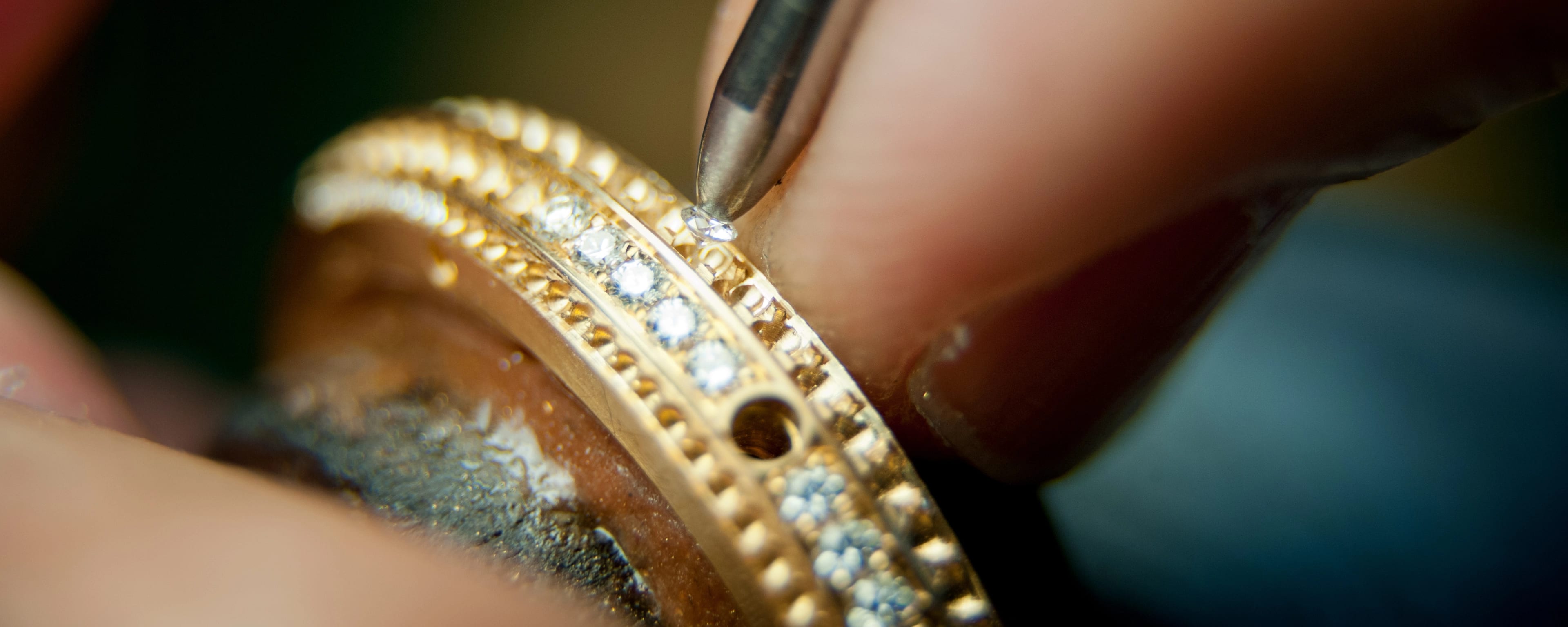artisans of time
the art of enameling
A palette of sophisticated skills
Enamel is a soft material composed of minerals and metal oxides used to achieve a glossy and smooth layered surface; decorations that are renowned for their appearance and resistance to time. At Patek Philippe, the magic of enamel happens in the furnace, where the material fuses with metal. Our enamellers are like alchemists, mastering metal, colors, fire, and traditional techniques: cloisonné, champlevé, paillonné and grisaille.
the enameler’s tools
Due to its complexity and the different techniques available, the art of enameling requires a wide array of tools that the artisan must learn to master over the course of their entire career. It takes years of practice to achieve the level of precision and dexterity required to magnify a dial to the point where it will be worthy of our quality criteria.
enameling techniques
Our enamelers deftly employ one or a blend of four traditional techniques, and a rare few master them all. These methods can harmoniously converge in a single piece, producing extraordinarily subtle shades as the enamels meld. Each technique demands immense time and patience due to the numerous steps involved, with every kiln firing serving as a critical test of the artisan's skill and dedication.

cloisonné enamel
A delicate gold wire – less than 0.5 mm thick – is meticulously bent to create an intricate design and affixed to a base plate coated with a layer of enamel. Following the initial firing, the cells are filled with carefully selected enamels. Depending on their type, colors, and desired effect, multiple firings may be necessary, each one refining details, enhancing colors and deepening the enchanting play of transparency and depth.

champlevé enamel
The process of filling the cells with enamel is similar to cloisonné enamel, but the base is pre-engraved. For mass-produced pieces with simple decorations, this is usually done mechanically. However, for intricate designs such as those involved in our unique creations, this engraving is performed by hand. Our enameler then meticulously fills the cells, imbuing them with the desired shades and bringing the design to life.
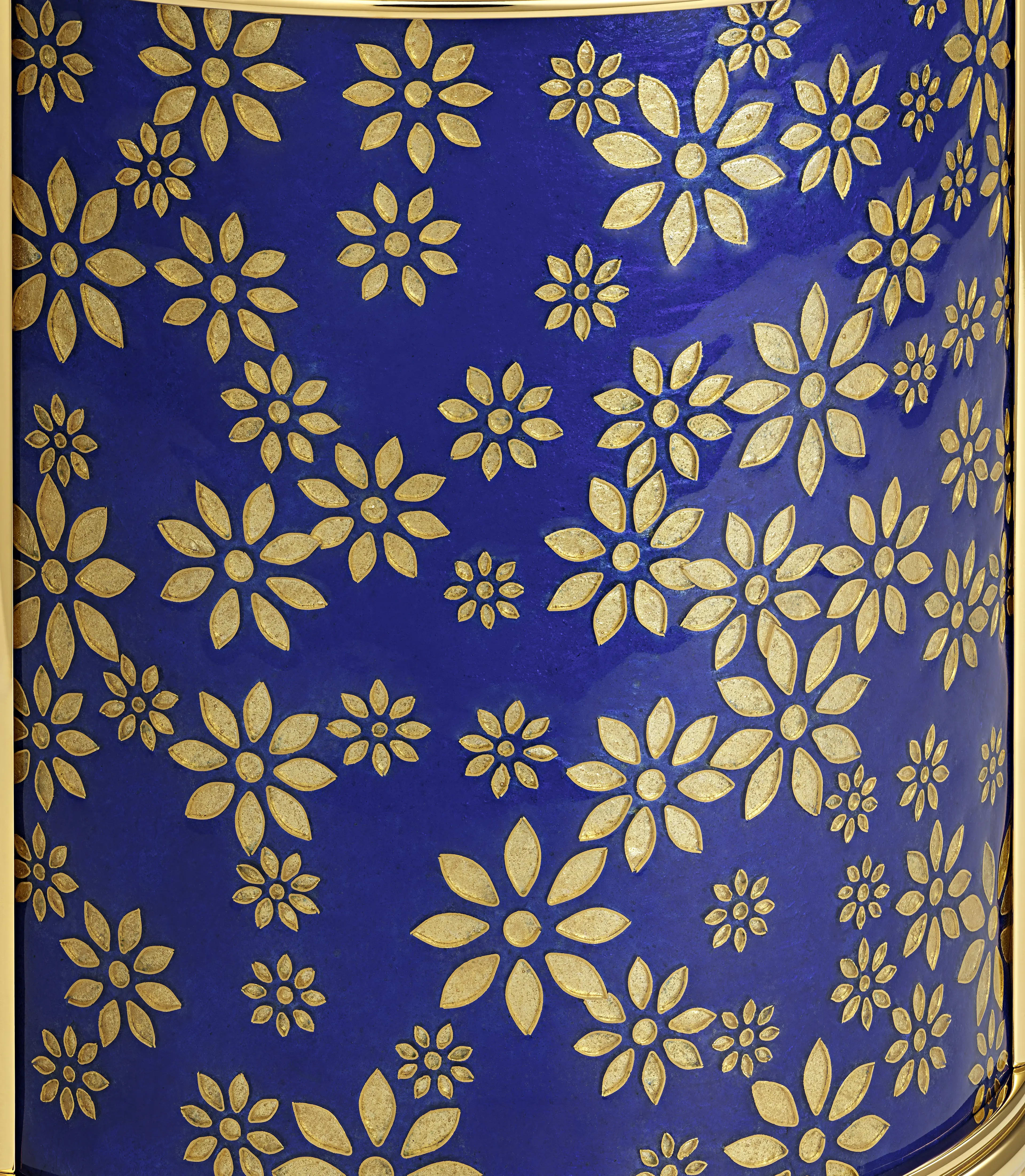
Paillonné enamel
The third technique, paillonné enameling, showcases an array of tiny gold leaf pieces meticulously cut into various forms. These delicate spangles, known as paillons, are artfully embedded within layers of transparent enamel, creating a captivating interplay of light and brilliance.

Miniature painting on enamel
This rare technique employs an enamel mixed not with water, but with oil – we use lavender oil – and is applied with a very fine brush on the surface to be decorated. This method enables the creation of miniature masterpieces, replicating the works of great painters, expressive portraits, detailed landscapes, and intricate scenes teeming with life.
enameled watches in our collection

The word “Email”
The word "email" on the dial of our enameled watches refers to the French term for enamel, émail. We are known for our exquisite craftsmanship and attention to detail, and we use enameling to produce some of our most artistic and collectible timepieces. The inclusion of "email" on the dial highlights the use of this traditional and labor-intensive technique that we have been safe-guarding for decades.
